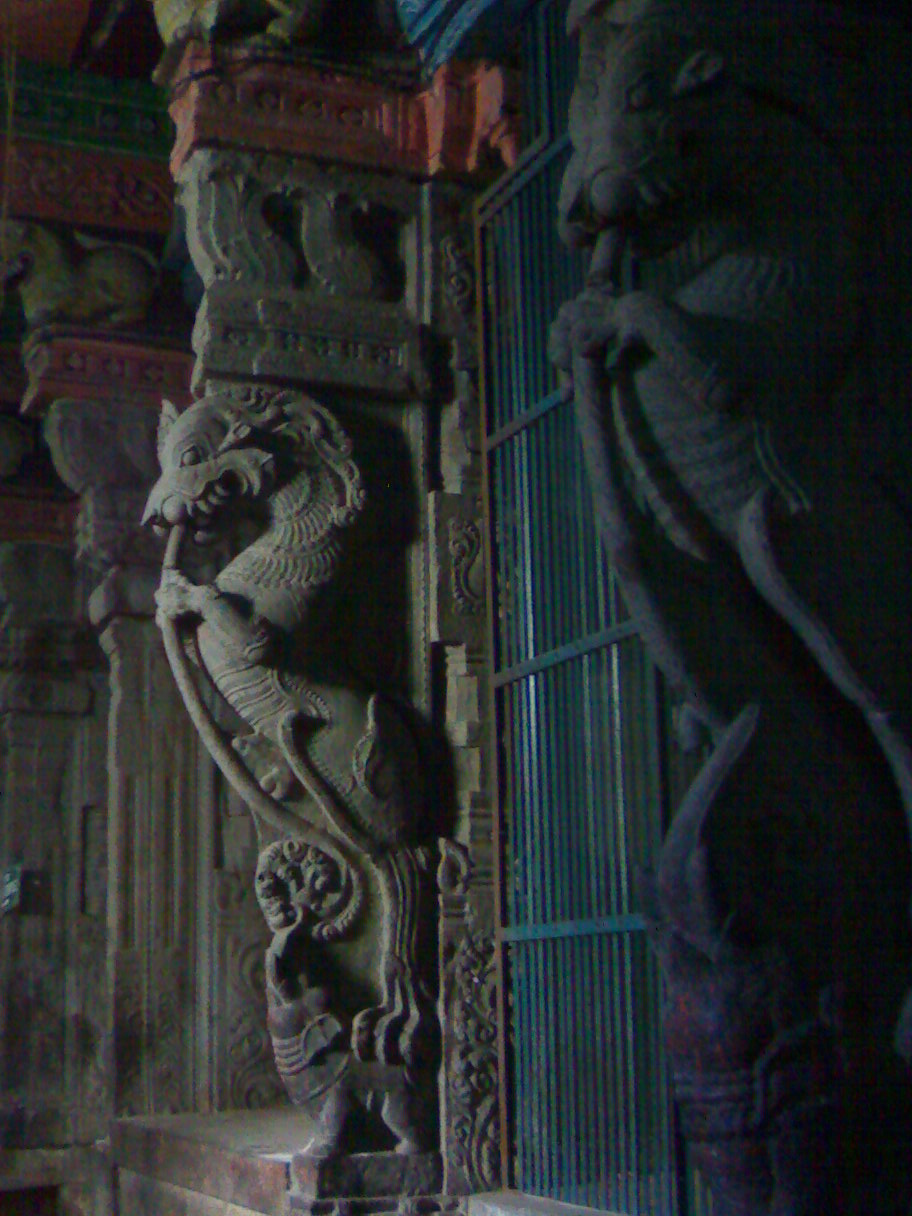Introduction: The Yali in Hindu Mythology and Art
The Yali, an ancient animal often depicted in Hindu mythology and art, is a fascinating creature that has captured the imagination of people for centuries. One of the most well-known depictions of the Yali can be found at the Meenakshi Temple in Madurai, India. In this blog article, we will explore the history and significance of the Yali and its presence at the Meenakshi Temple.

The Mythical Creature: Description and Symbolism
The Yali is a mythical creature that is often described as a hybrid between a lion and an elephant. It is said to be incredibly powerful and fierce and is often depicted as a protector or guardian in Hindu art and architecture. The origins of the Yali can be traced back to ancient Indian and Southeast Asian cultures, where it was believed to be a powerful symbol of strength and resilience.
The Meenakshi Temple: History and Significance
One of the most famous depictions of the Yali can be found at the Meenakshi Temple in Madurai, India. This temple, which is dedicated to the goddess Meenakshi, is one of the oldest and most important temples in South India. The temple is known for its intricate architecture and stunning artwork, and the Yali is a prominent feature throughout the temple.
Depictions of the Yali at the Meenakshi Temple
At the Meenakshi Temple, the Yali is depicted in a variety of ways. It can be seen as a sculptural element on the temple’s gopurams (towering entrance gateways), as well as on the walls and ceilings of the temple’s many halls and chambers. The Yali is often depicted with its mouth open and its teeth bared, as if ready to pounce on any intruders or enemies of the temple.
The Thousand Pillar Hall: Intricate Yali Carvings
One of the most striking depictions of the Yali at the Meenakshi Temple can be found on the pillars in the temple’s Thousand Pillar Hall. This hall, which is known for its intricately carved pillars, features several pillars that are adorned with detailed Yali carvings. These carvings showcase the incredible skill and craftsmanship of the temple’s artisans and are a testament to the enduring cultural significance of the Yali in South Indian art and mythology.

brad.coy, CC BY 2.0, via Wikimedia Commons
Enduring Cultural Significance of the Yali
The presence of the Yali at the Meenakshi Temple is a testament to the enduring power and significance of this mythical creature in South Indian culture. The Yali’s fierce and protective nature makes it a fitting symbol for the temple and the goddess Meenakshi, and its presence throughout the temple is a reminder of the enduring cultural legacy of ancient Indian and Southeast Asian cultures. For visitors to the Meenakshi Temple, the Yali serves as a powerful reminder of the rich and complex history of this important cultural site, and of the enduring power of myth and legend in our lives.
Dive Deeper
Book Recommendation
If you are interested in learning more about the Yali and its significance in South Indian culture, a great book to read would be “The Art and Iconography of the Yali” by V. Kameswari. This book explores the various depictions and interpretations of the Yali in Indian art and architecture and provides a detailed analysis of the Yali’s significance in Hindu mythology and iconography. It also includes many illustrations and photographs of Yali sculptures and carvings from various temples and historical sites throughout South India.
Documentary/ Video
There are several documentaries and videos available on the Yali and its significance in Indian art and architecture. One of the most informative and interesting videos on the topic is “Yali: The Mythical Guardian” by National Geographic. The video explores the various depictions of the Yali in South Indian temples and examines its symbolism and meaning in Hindu mythology.
If you found this article informative, you might want to take a look at this other article – Exploring the Fascinating Tale of Pushpakviman in Hindu Mythology
